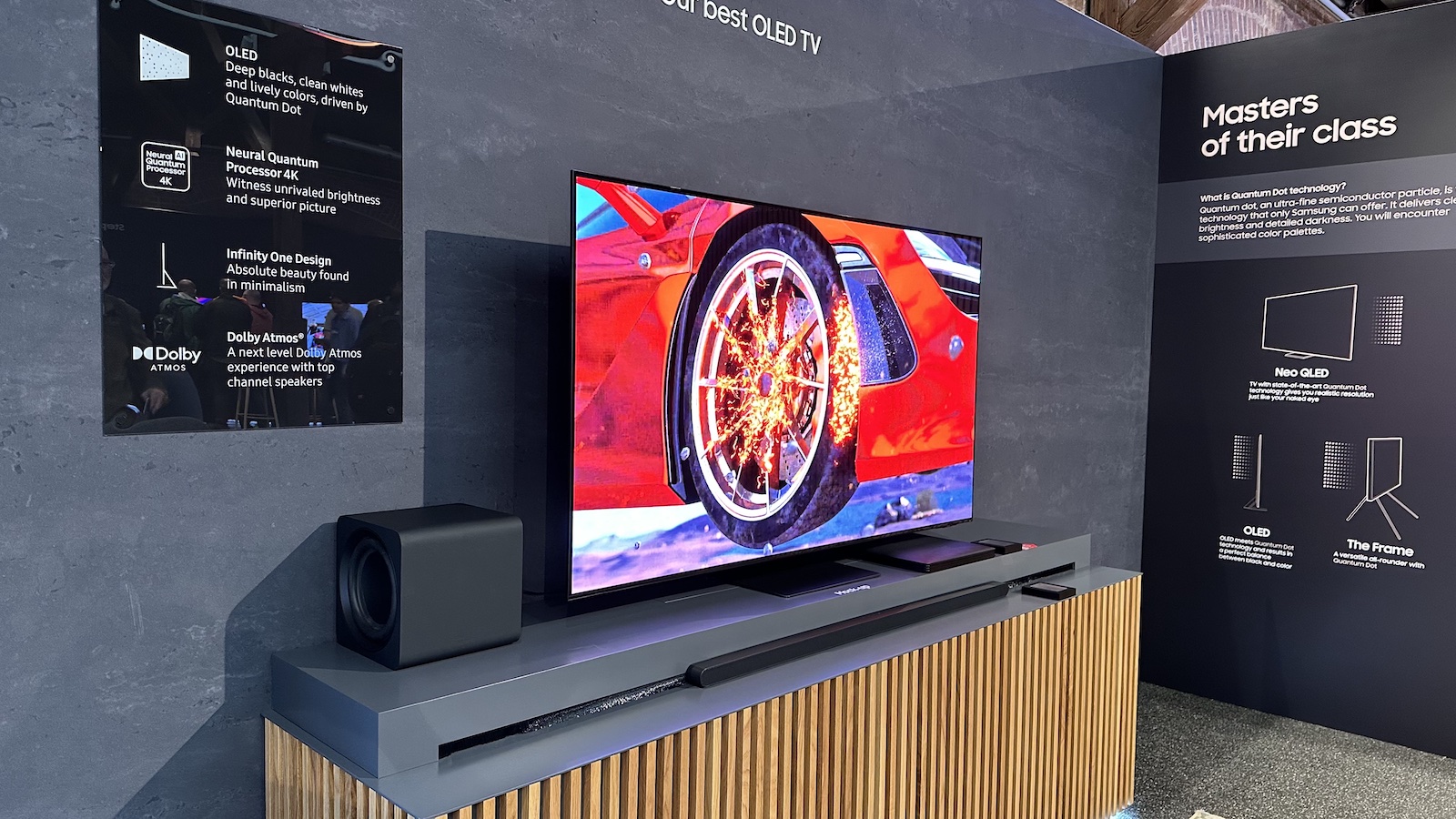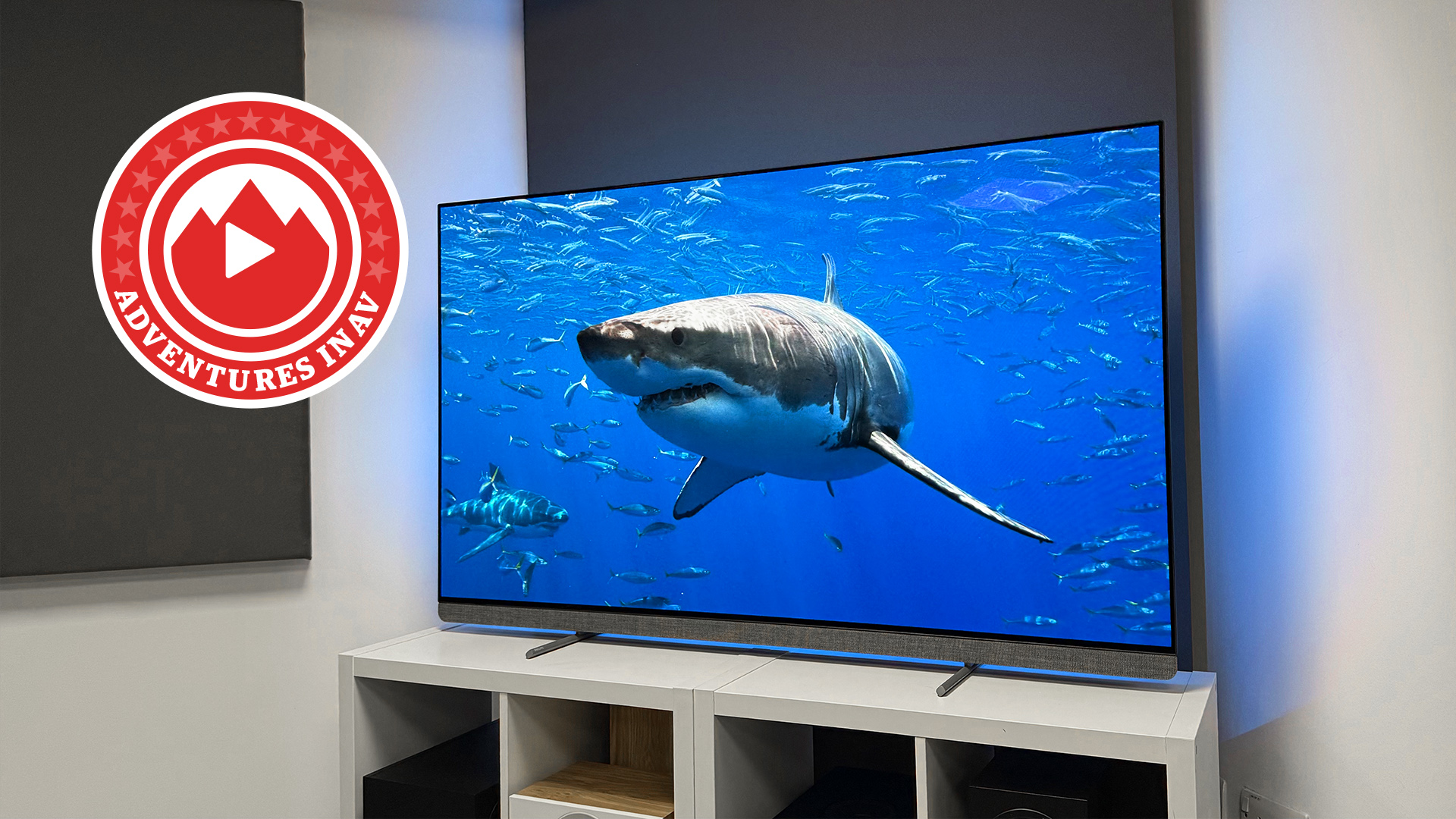The LG MLA vs Samsung QD-OLED grudge match will be epic – and that’s great for TV buyers
Samsung and LG are pushing each other to brighter heights

This week, our TV & AV Editor, Tom Parsons, had the pleasure of seeing Samsung and Sony’s latest TVs. This finally gave us a full view of what to expect from all of the heavy hitters this year, with LG and Panasonic having shown their hands at CES in January and Philips having done the same in early February. And boy does it look like 2023’s going to be awesome.
To catch everyone up, the big players in home cinema are currently falling into two camps for their flagship TVs.
In one camp, you have team MLA. These are all of the TV manufacturers set to use LG Display's third-generation "META" OLED panels, which use Micro Lens Array tech. The big MLA OLED TVs announced so far include the Panasonic MZ2000, Philips OLED908 and LG G3.
But on the other side of the fence, we have team QD-OLED, which includes manufacturers that are set to produce TVs using Samsung Display's second-generation QD-OLED panels. The confirmed TVs coming from this side are the Samsung S95C and Sony A95L, the latter of which was only unveiled this week.
As a team, we've now seen all of these TVs in action, but only very briefly, so we can’t offer a definitive verdict on how they compare yet. We can, though, say that it's shaping up to be one hell of a fight, with both technologies taking different routes to the same goal – raising maximum brightness levels to dazzling new heights.
Specifically, LG Electronics (which produces actual TVs and is distinct from LG Display, which produces the panels) says that its new G3 will be capable of hitting a peak brightness of over 2000 nits. To put that into context, the LG G2 we tested and loved last year peaked at around 1000 nits.
Meanwhile, Samsung’s second-generation QD-OLED panels, according to some of the marketing materials, can go up to twice as bright as those of the previous generation. If true, that’s a serious achievement, as last year's Sony A95K could also hit a figure of 1000 nits or so.
The latest hi-fi, home cinema and tech news, reviews, buying advice and deals, direct to your inbox.
The reason I find this so exciting is that it’s the latest chapter in a long-running battle between LG and Samsung for TV dominance. This battle goes back decades, but it became particularly intense around 10 years ago when OLED first hit the scene, and it's been a huge driver of innovation ever since.
Take a walk down memory lane with me: when LG pushed OLED, which offered way deeper blacks than the LCD and even plasma sets that were all the rage at the time, Samsung responded with QLED.
The differences were stark: OLED was all about perfect blacks and pixel-level contrast control, and QLED was all about increased brightness and colour vibrancy. Of course, neither brand was happy being the best in some areas but weaker in others, so LG has been on a neverending mission to make its OLEDs brighter, while Samsung has been similarly determined to increase the black depth and contrast of its QLEDs.
Samsung's still committed to QLED technology, which even now forms the majority of its current TV range, but last year it finally launched its own OLED TVs. And not just any OLED TVs, but QD-OLED TVs, which combine OLED technology with Quantum Dots for increased brightness and colour expression.
The increased intensity of the competition appears to have spurred on both LG Display and Samsung Display and, suddenly, we're entering a new, thrilling phase of innovation – MLA vs QD-OLED.
Both technologies look set to offer massive increases in brightness, finally overcoming OLED technology's core perceived weakness.
The best part of this? The fight hasn’t just improved the TVs produced by LG and Samsung. The vast majority of TV manufacturers produce models that use either LG or Samsung panels. All of the OLED TVs produced by LG Electronics, Panasonic, Philips, Hisense etc, use LG Display panels, and every QD-OLED TV (and monitor) you can currently buy uses a panel manufactured by Samsung Display.
At each stage of LG and Samsung’s grudge match, we’ve seen marked improvements in picture quality on the new TVs that have passed through our test rooms. This is why, even though it’s way too early to call if either new tech will achieve its goal and offer the improved picture quality the companies have promised, it will breathe fresh competition into the market, creating new competition and a need for even greater innovation. That means better TVs, and that is a great thing for consumers.
And that’s why I think this year’s Samsung vs LG TV throwdown is going to be particularly awesome and will potentially lead to another boom in picture performance.
MORE:
These are the best Samsung TVs we've tested
Check out our picks of the best LG TVs
Looking for a gaming TV? These are the best gaming TVs we've reviewed

Alastair is What Hi-Fi?’s editor in chief. He has well over a decade’s experience as a journalist working in both B2C and B2B press. During this time he’s covered everything from the launch of the first Amazon Echo to government cyber security policy. Prior to joining What Hi-Fi? he served as Trusted Reviews’ editor-in-chief. Outside of tech, he has a Masters from King’s College London in Ethics and the Philosophy of Religion, is an enthusiastic, but untalented, guitar player and runs a webcomic in his spare time.
